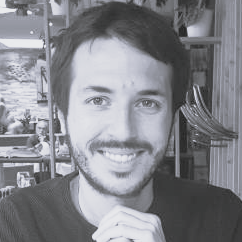 |
INTERVIEW - SYBILLE DE MARGERIE, FOUNDER: "I SEEK TO CONVEY AN ART OF LIVING THAT BLENDS TRADITION AND CREATION IN A SPIRIT OF LUXURY À LA FRANÇAISE" (France)
Created 30 years ago, the Sybille de Margerie agency has established itself as a key player in the luxury hotel and hospitality industry, revolutionising the interiors of the most prestigious establishments with a blend of audacity and sophistication. |
Category: Europe - France - Interviews and portraits
- Suppliers
- Providers - Interviews
Interview made by Christopher Buet on Thursday 20 July 2023
In the distance, the peaks of the Alps bristle on the horizon, dressed in their delicate blanket of snow. All around, the fir trees refine a picture-postcard backdrop to a majestic wooden building, an XXL chalet whose exterior charm is matched only by the luxury it contains. It has to be said that this is by no means a mountain lodge for hikers or mountaineers. In front stands a huge statue of a horse, made of reflective panels. This grey horse, made white by the snow, gives its name to the LVMH Alpine jewel, the Cheval Blanc Courchevel. More than a hotel, it is a marriage of tradition and modernity, a sophisticated audacity partly imagined by Sybille de Margerie.
An evocation of the style created over thirty years of efforts and projects in the service of luxury hotels, which still hold a very special place in her heart. The jade-eyed designer has devoted her life to this luxury, by choice but also by descent, having been nurtured by the prestige of the finest properties. Accustomed to gilding and marble floors, she has a passion for volumes, the way rooms are arranged and the way furniture is arranged. In her mind was born the desire to bring her echo to this universe that fascinates her. An echo that she hopes will be personal and unique.
With her sensitivity, her eye for detail, her intuition and her convictions, her choice of materials and her constant refusal to be uncomfortable, Sybille de Margerie has won the trust of the greatest hoteliers and players in the sector, multiplying her projects around the world from the Alps to the Middle East, via Saint-Tropez, the Champagne region or the West Indies. It's a unique experience that she agreed to share with the Journal des Palaces, in an interview where we talked about luxury, but also about emotion.
Journal des Palaces: In addition to your Paris office, Sybille de Margerie, do you have any other international branches? How many employees do you have?
Sybille de Margerie: The expertise developed within my agency is the fruit of the work of a team of over twenty people in Paris. We also have offices in Florence and Dubai. This international base, and the resulting cultural mix, are additional assets for the large-scale projects we take on in different parts of the world.
What is your vision of luxury today? How has it evolved over the years?
More than ever, luxury is reassuring: a symbol of heritage and the transmission of quality, in a world that is becoming increasingly uniform, it now responds to the need for escape and an art of living that subtly blends passion and creation. For a long time synonymous with possessions and prestige, it has become emotional and a source of individual pleasure.
My vision of luxury is this quest for enchantment, offering a singular experience, a sensorial luxury, born of surprise, harmony, attention to detail and the fluidity of spaces. My world is one of timeless luxury, a discreet luxury that can be read in the details and is not ostentatious. Without ever compromising on comfort.
How do you see interior design in luxury hotels evolving over the years?
The challenge in our profession is to be able to innovate by integrating new lifestyles and consumer habits. A room still has the same functions and more or less the same facilities. However, they can have different faces and offer an experience full of surprises.
Our know-how and our objective are to offer a part of the imagination that will remain the hallmark of the customer experience. Today, the choice of a luxury holiday destination is a quest for a timeless, unusual space. Our creativity is expressed through a multitude of details, with bold spaces, colours and materials. For a hotel, spa or boat, the ultimate luxury is to be timeless.
Which prestigious hotels do you work with?
Prestigious brands have placed their trust in us, such as Mandarin Oriental (Paris, Cairo), Four Seasons (Grand-Hotel du Cap-Ferrat, private residences Dubai), Kerzner (Atlantis Royal Residences, Dubai) Baccarat (Villa Camerata in Florence) as well as independent groups and investors.
How do you choose which projects to work on in the luxury hotel sector?
Most projects are born out of a meeting. It's based on mutual trust and shared values. A luxury hotel project is a long-term undertaking with high financial stakes. It is therefore essential that the objectives of the investor, the operator, the architect and all the stakeholders are clearly aligned.
What are the requirements of the luxury hotels you work with?
Investors and luxury brands call on us to offer their customers a particular way of life, a particular feeling.
It's a question of remaining creative while integrating the constraints associated with running a hotel, including technical, safety and regulatory constraints. This exercise, which we master perfectly, is fundamental to the success of a project.
What do you bring to the hotels that call on you?
For the projects that are entrusted to me, I try to come up with an original response, imbued with passion. My aim is to come up with creative solutions that are totally consistent with the brand's identity, and that resonate with the place, the city, the district where the hotel is located.
To this end, listening to our customer is an invaluable phase. It points us in the right direction to develop a personalised, truly creative response, which is rarely turned down.
How do you work with hoteliers? How far do you go in your thinking and collaboration?
Designing a hotel means designing a volume, a living space, a space for living. As an interior architect, I have a particular vision of interior space and volumes. The first phase in my work consists of designing the spaces, optimising the layouts and making the circulation flow. I put a lot of passion into this because it's the basis of a hotel's success, both for the operator and for the end customer.
Then comes the creative phase. It's all about revealing the intangible dimension and uniqueness of a place and creating an impression. We create harmonies that bring together all the finishes and furniture, and we design unique pieces adapted to the specific needs of the spaces.
Today, perhaps even more than in the past, we are very careful to be part of the long term and to avoid fashion trends. Our interior designs are intended to be timeless and enduring. And, of course, we add a touch of novelty, even fantasy, through our selection of materials and our collaboration with craftsmen.
We are also extremely concerned with the final touches, the moment when we have to be demanding in terms of quality and finishing down to the smallest detail and be vigilant in preserving the initial creative line.
How would you define your style?
More than a recognisable style, I seek to convey an art of living that blends tradition and creation in a spirit of luxury à la française.
Breaking away from all conventional codes is the spirit of luxury that I claim, a luxury made up of subtleties that are invisible but felt. The many details that create an emotion, one that will remain engraved in the memory of customers. For me, the quintessence of luxury is to use design to reveal the very soul and uniqueness of a place, to tell a story. Whether it's Courchevel, Florence, Cairo, Saint Bart's, Dubai or the Côte d'Azur, my common thread is the language of colours and materials.
What inspires your work?
Travel and exhibitions are all sources of inspiration for taking a step back, regenerating creativity and avoiding the pitfalls of trends.
Do you form partnerships with artists to create atmospheres with unique works? If so, can you give us some examples?
These collaborations are always at the heart of our projects and contribute to the extra soul we seek to create.
From the Mandarin Oriental Paris, with embroidery by Lesage, to the Atlantis The Royal private residences, with their 'haute couture' finishes by four artists, four women with unique skills: Annie Trussart, an expert in embroidery, Helen Amy Murray for her hand-sculpted leathers, Anne Corbiere, who weaves metal, and Isabelle Poupinel for her porcelain work.
Very recently, for the renovation of the Beauchamp and Clair Soleil villas at the Grand-Hôtel Cap-Ferrat, we called on the services of two painters: Claire Basler for a dreamlike fresco created directly on site, and Cécile Gauneau for a wave pattern in the bedrooms. And Véronique de Soultrait has woven rope motifs into an original and sophisticated décor.
You try to match the image of the place where you work. Why is it so important to adapt to the environment around you?
One of the ways of characterising a building is to take account of the place where it is located. This is also a source of creativity. We spend a lot of time visiting it, identifying its assets and its history. My philosophy is to use design to reveal the very soul of a place.
How much importance do you place on eccentricities to make your work stand out in a hotel or a room?
I don't believe that eccentricity is the key to creating an attractive environment. In my approach, imagining the specific atmosphere of a place is based on a rather poetic and cultural dimension, playing on sensitivity, generating a form of vibration that will go straight to the heart of customers.
You like to combine materials and textures in the same room. Why do you do this?
My taste for noble materials has always guided my inspiration. The sensorial approach that we create involves a fine-tuned choice of materials, colours and lighting ambiances.
How do you choose your materials? Does your artistic approach also take into account a responsible dimension?
We favour partnerships with local craftsmen and artists, capable of creating unique works in keeping with the site and its environment.
What is your proudest creation? Why or why not?
Cheval Blanc Courchevel is still a project I'm particularly attached to 10 years after its creation. It was an extremely exciting adventure, both humanly and professionally, with a wealth of encounters.
What are your next projects?
Among our current projects, there are two emblematic ones. The historic Shepheard Hotel in Cairo, on the banks of the Nile, owned by the Al Sharif company, which will carry the Mandarin Oriental name. And the conversion of a fifteenth-century estate near Florence, the Villa Camerata, under the impetus of the Omnam group, into the future Baccarat’s hotel.
|
|







